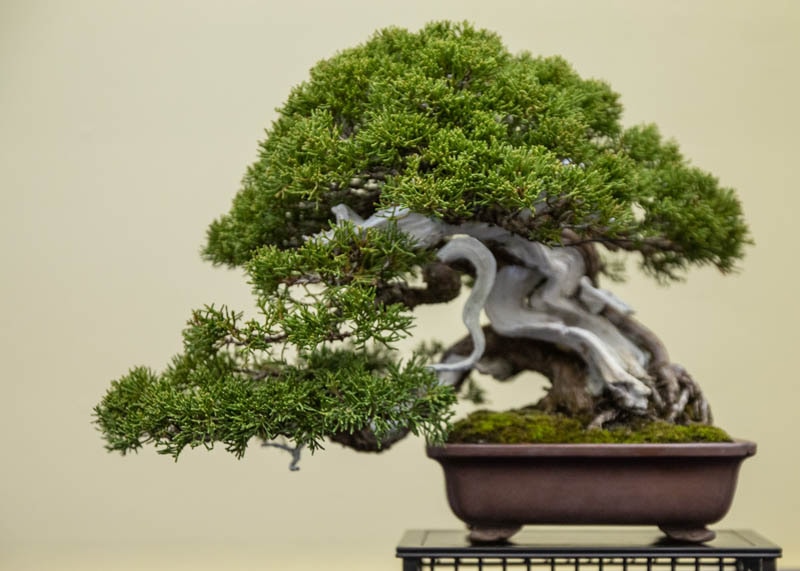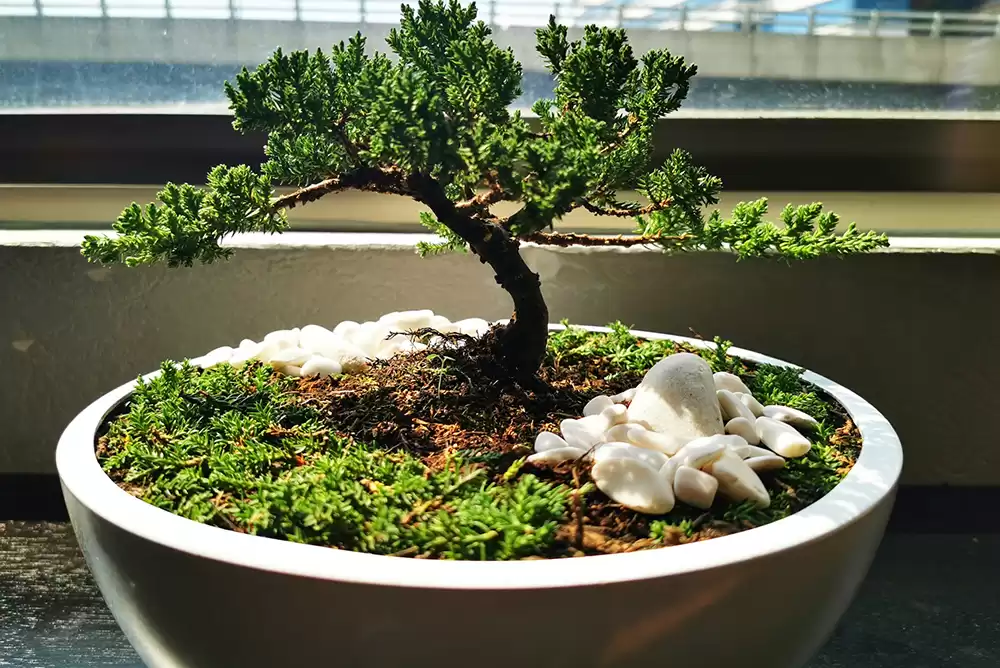The Shimpaku Bonsai tree needs bright, indirect sunlight and well-draining soil. Regular pruning and watering are essential for its health.
Shimpaku Bonsai trees, a popular choice among bonsai enthusiasts, originate from the Japanese juniper species. They are admired for their elegant, twisted trunks and lush green foliage. Proper care involves providing bright, indirect sunlight and ensuring the soil drains well to prevent root rot.
Regular pruning helps maintain their shape and encourages healthy growth. Watering should be consistent but not excessive, allowing the soil to dry slightly between watering sessions. Fertilizing during the growing season supports their development. With attentive care, Shimpaku Bonsai trees can thrive and bring a touch of natural beauty indoors or in garden spaces.

Credit: bonsaishop.com.au
Introduction To Shimpaku Bonsai
Caring for Shimpaku Bonsai trees involves proper watering, sunlight, and pruning techniques. These miniature wonders thrive with attentive care, rewarding enthusiasts with their stunning beauty.
History And Origin
Shimpaku bonsai trees come from Japan. They are a type of juniper tree. People started using them for bonsai in the early 1900s. These trees were found in the mountains. They have been popular ever since.
Unique Features
Shimpaku bonsai trees have many special features. They have twisted trunks and dense foliage. Their leaves are small and scale-like. The bark is reddish-brown and peels naturally. This gives the tree an aged look. Shimpaku trees are also very hardy. They can survive in different climates. They are perfect for bonsai beginners.

Credit: www.bonsaiempire.com
Choosing The Right Shimpaku Bonsai
Pick a tree with bright green foliage. This shows good health. Check for firm roots that are not rotten. Look at the trunk. A strong trunk means a strong tree. Avoid trees with yellow or brown leaves. These could be sick or stressed.
Common Shimpaku bonsai types include:
- Kishu – Known for its dense foliage.
- Itoigawa – Has fine, delicate leaves.
- Toya – Features a rugged look.
Ideal Growing Conditions
Shimpaku Bonsai trees thrive best in well-drained soil, ample sunlight, and moderate humidity. Regular watering and occasional misting help maintain optimal health.
Light Requirements
The Shimpaku Bonsai tree loves bright light. Place it where it can get full sun for at least 6 hours a day. If kept indoors, use grow lights to ensure proper light exposure. Avoid placing it in dark corners or areas with low light.
Optimal Temperature
Shimpaku Bonsai trees thrive in moderate temperatures. Keep the temperature between 60°F and 75°F. Protect the tree from extreme cold and harsh winter winds. During winter, consider moving it indoors to prevent frost damage.
Watering Practices
Shimpaku Bonsai trees thrive with consistent watering practices. Ensure soil remains moist but not waterlogged to promote healthy growth. Adjust watering frequency based on season and climate conditions.
Frequency And Amount
Water the Shimpaku Bonsai tree regularly. The soil should be moist, not soggy. A good rule is to water daily in summer. In winter, water every few days. Use a watering can with a fine nozzle. This helps distribute water evenly. Check the soil often. Dry soil means the tree needs water.
Signs Of Overwatering
Overwatering can harm the Shimpaku Bonsai tree. Look for yellow leaves. This is a sign of too much water. The soil may also smell bad. Roots can rot if kept too wet. Reduce watering if these signs appear. Let the soil dry out a bit before the next watering.
Soil And Fertilization
Proper soil and fertilization ensure a healthy Shimpaku Bonsai tree. Use well-draining soil and apply balanced fertilizers regularly for optimal growth.
Best Soil Mixes
Shimpaku bonsai trees need well-drained soil. The best soil mix includes akadama, pumice, and lava rock. Use equal parts of each for a balanced mix. This helps roots get enough air and water. Avoid heavy, clay soils as they retain too much water.
Feeding Schedule
Feed Shimpaku bonsai trees once every two weeks during growing season. Use a balanced liquid fertilizer. Reduce feeding to once a month in the winter. Overfeeding can harm the tree. Always follow the instructions on the fertilizer package.
Pruning And Shaping Techniques
Start with clean and sharp tools. Cut dead or weak branches first. Trim branches that cross each other. This helps the tree grow better. Always prune in small steps. Check the shape of the tree often. Remove any branches that spoil the look. Do not cut too much at once. This can harm the tree. Prune during the growing season for best results.
Use wire to shape branches. Wrap the wire gently around the branch. Bend the branch slowly into the desired shape. Keep the wire on for a few months. Check the wire regularly to prevent damage. Remove the wire carefully when done. Use tools to create jin and shari. These are deadwood features. They add character to the bonsai. Make small cuts to create these features. Always work slowly and carefully.
Pest And Disease Management
Shimpaku bonsai trees often face pests like aphids, spider mites, and scale insects. Aphids are small, green, or black bugs. Spider mites are tiny and create webs. Scale insects appear as small, brown bumps on the leaves and stems. These pests can damage the tree by sucking sap. They also weaken the tree and cause leaf yellowing.
Regularly inspect your Shimpaku bonsai for any pests. Keep the tree clean by spraying water on the leaves. Ensure proper air circulation around the tree. Avoid overwatering to prevent fungal growth. Use insecticidal soap or neem oil to treat infestations. Quarantine new plants before placing them near your bonsai.
Seasonal Care
Ensure vibrant health for your Shimpaku Bonsai by providing adequate sunlight and proper watering. Regularly prune to maintain shape and encourage growth. Optimal care includes protection from extreme weather conditions.
Spring And Summer Tips
Keep the Shimpaku Bonsai in a spot with plenty of sunlight. Water the tree frequently but avoid overwatering. Ensure the soil is well-drained to prevent root rot. Fertilize the bonsai every two weeks using a balanced fertilizer. Prune new growth to maintain the desired shape and size.
Fall And Winter Tips
Reduce watering frequency as the weather cools. Ensure the soil remains moist but not soggy. Move the bonsai to a location protected from frost and harsh winds. Use a mulch layer to protect the roots from extreme cold. Avoid fertilizing during this period to prevent stimulating growth.
Repotting Guidelines
Repotting should be done during early spring. The tree is not actively growing then. This minimizes stress on the tree. Repot every 2-3 years for young trees. Older trees can be repotted every 4-5 years. Look for roots growing out of the pot. This is a sign it’s time to repot.
First, prepare a new pot with proper drainage. Next, gently remove the tree from its current pot. Shake off the old soil from the roots. Trim away any rotten or dead roots. Place the tree in the new pot. Fill in with fresh, well-draining soil. Water the tree thoroughly. Keep the tree in a shaded area for a few weeks.

Credit: aquaticgardensusa.com
Conclusion
Caring for a Shimpaku bonsai tree is both rewarding and enjoyable. Consistent watering, proper pruning, and the right soil mix are key. Follow these care tips to ensure your bonsai thrives. With dedication and attention, your Shimpaku bonsai will remain healthy and beautiful for years to come.

